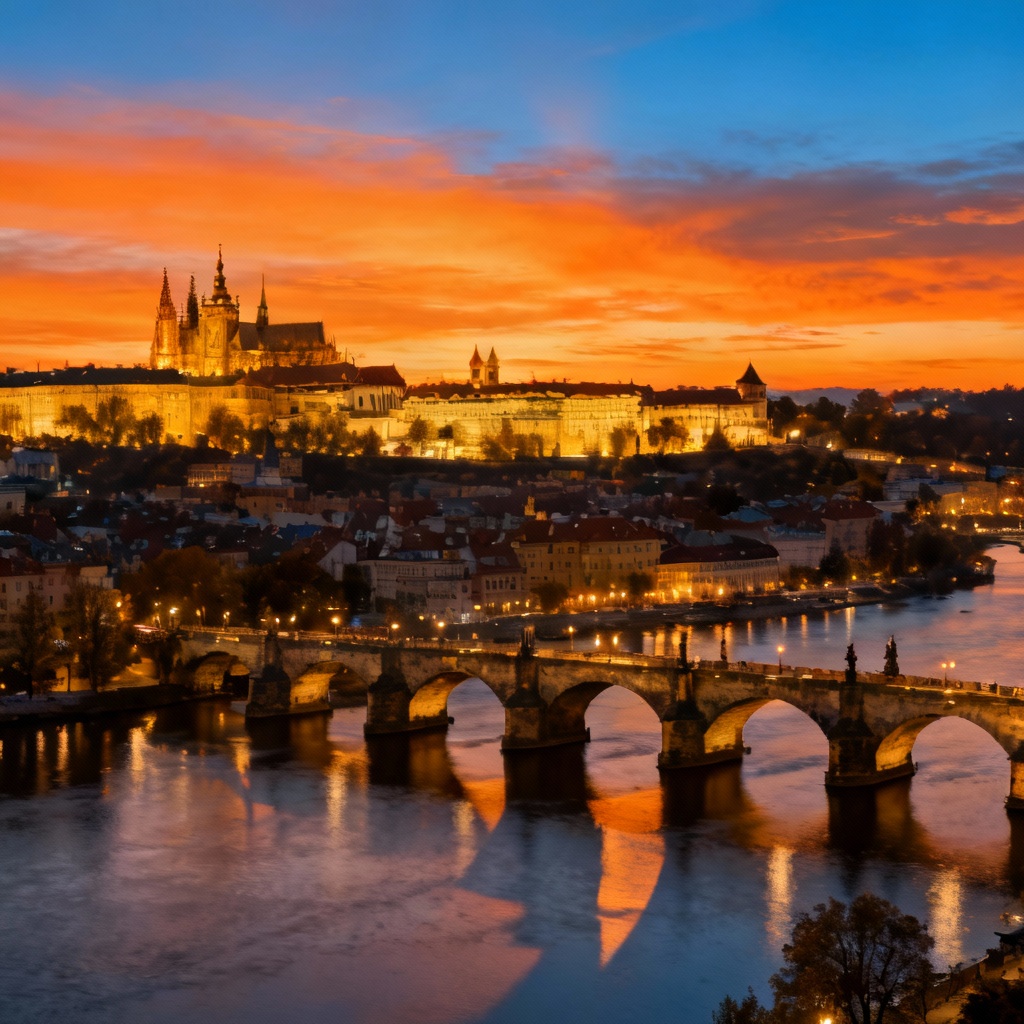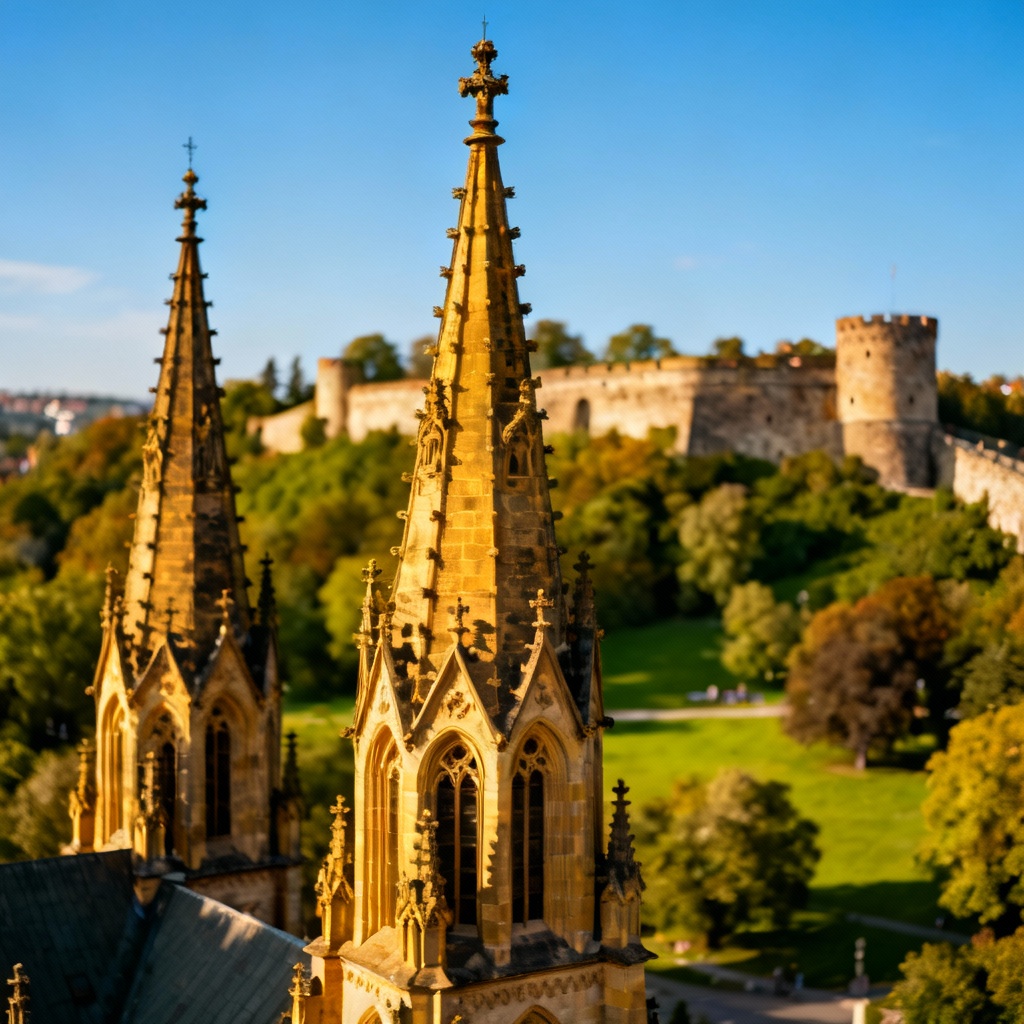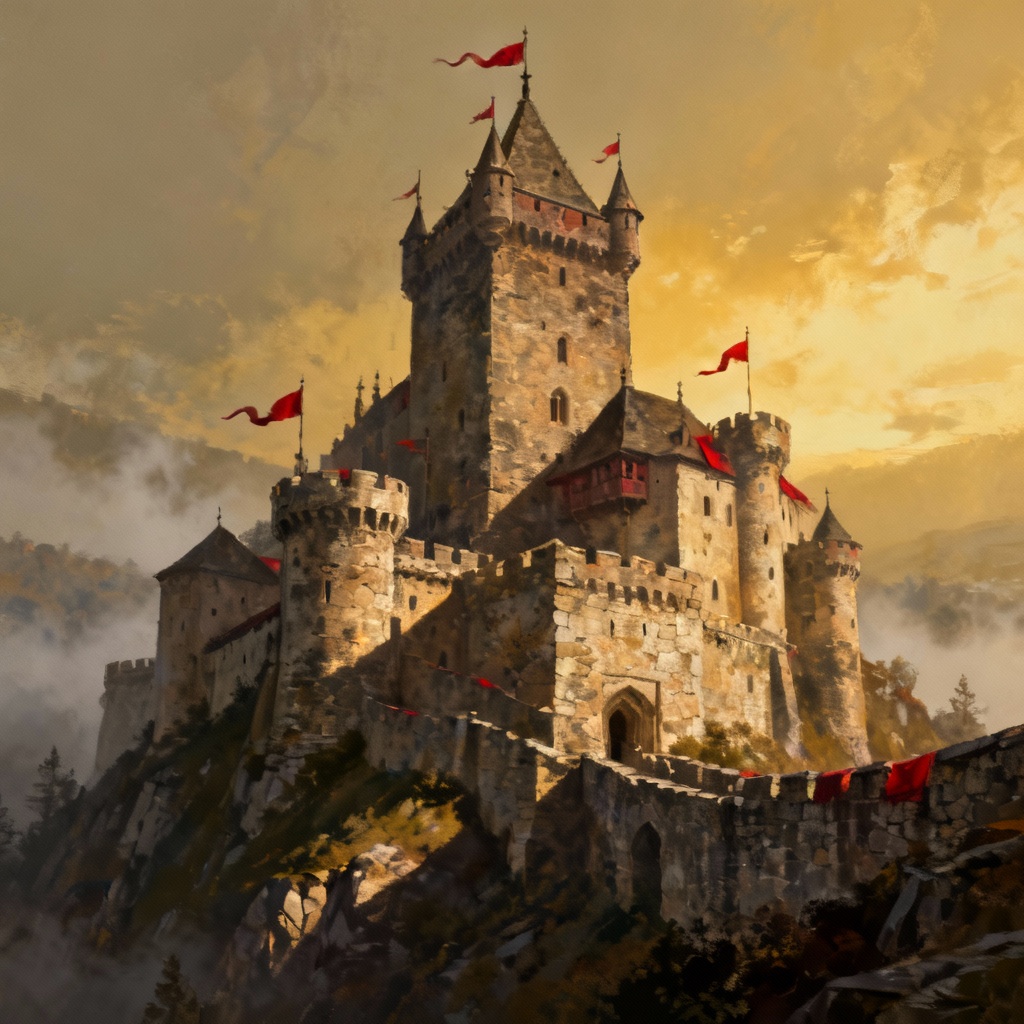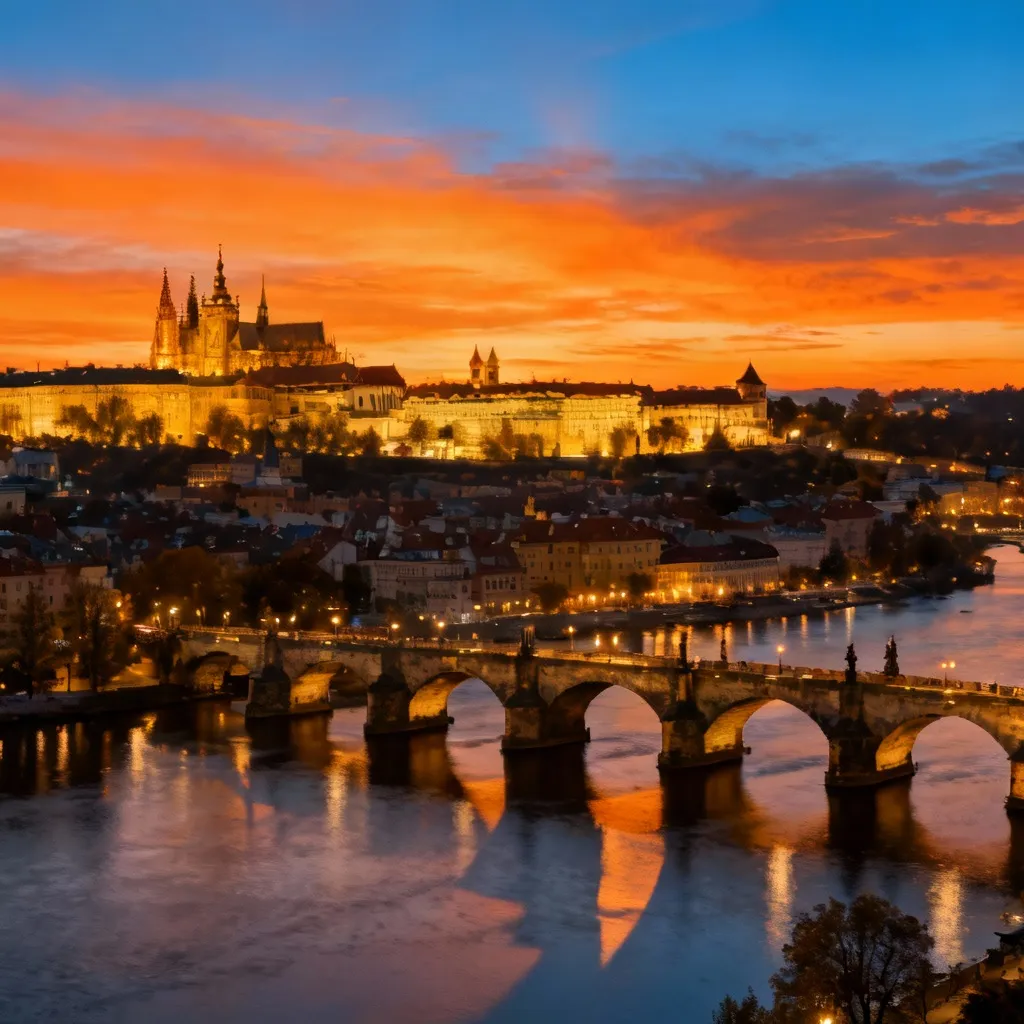Uncovering the Medieval Magic: The Best Castles to Visit in Prague and Beyond
Introduction: Why Prague's Castle Scene is a Must-See
There is a special kind of magic that hangs in the air of Prague, a historic density visible in every spire and cobblestone street. As the undisputed capital of European castle culture, the Czech Republic—and particularly Prague—offers an extraordinary journey through a millennium of regal history and legendary folklore. This is where your grand adventure into the past truly begins.
The core of the city’s identity, often referred to as the City of a Hundred Spires, is built upon centuries of political and architectural transformations. Delving into the history of Prague means exploring its stunning and formidable fortifications, a history that stretches from the seat of Bohemian Kings to the present-day residence of the President. The landscape is quite literally shaped by power and defense.
This article will guide you beyond the main tourist routes to uncover the greatest of the czech castles. You can expect to encounter an unparalleled city-centre fortress, an oft-missed historical citadel perched high on a scenic rock, and a dramatic Gothic jewel perfect for a magnificent day trip marvel. Prepare to walk the hallowed halls of queens, kings, and Holy Roman Emperors!

The Immortal Jewel: A Deep Dive into Prague Castle (Pražský hrad)
The iconic silhouette of prague castle dominating the city skyline is instantly recognizable. More than just a single structure, it is a vast, interconnected complex of palaces, churches, towers, and halls. Built beginning in the 9th century, this compound represents the entire written and unwritten history of the nation, remaining the seat of power across centuries of Bohemian rulers, Habsburg monarchs, and now the president of the Czech Republic.
Largest Ancient Castle in the World: Fact vs. Legend
It’s no legend: according to the Guinness Book of Records, prague castle holds the official title as the world's largest ancient coherent castle complex. Spanning nearly 70,000 square meters (over 750,000 square feet), its sheer scale and historical layering are astounding. Walking through its three main courtyards offers a unique journey through a multitude of architectural styles, including Romanesque, Gothic, and Baroque.
You can wander the grounds themselves—including the magnificent gardens—for free. A ticket is only required to enter the major interior attractions and exhibits, like the cathedral and the royal palace. Planning your route and buying tickets in advance will greatly minimize your waiting time, which is especially important during the busy summer months.
St. Vitus Cathedral: A Gothic Masterpiece and Royal Resting Place
The unquestionable spiritual and architectural heart of the castle complex is St. Vitus Cathedral, a majestic testament to high Gothic design. This imposing cathedral is intricately woven into the very history of Prague; it's the site where Czech kings were crowned, where many found their eternal rest, and where the Bohemian Crown Jewels are securely safeguarded in a hidden chamber.
While construction began in 1344 under Charles IV, the cathedral’s final Neo-Gothic façade and two main towers were not fully completed until 1929, resulting in a striking blend of eras that captivates all visitors. Take the time to admire the stunning stained-glass windows, some of which feature work by the famous Czech artist Alphonse Mucha.
Exploring the Complex: Golden Lane, Old Royal Palace, and Gardens
Don't miss the historical highlights scattered across the vast compound. The Old Royal Palace is a crucial piece of Czech history, housing the Vladislav Hall, an immense vaulted space where the nation's presidents have been sworn in since 1918. Meanwhile, Golden Lane offers a charming contrast: a street of tiny, brightly colored cottages originally built in the 16th century for alchemists, goldsmiths, and the castle’s poor marksmen.
A ceremonial changing of the guard, complete with a fanfare and a banner exchange, takes place daily at noon in the first courtyard, a visually impressive experience. To enjoy the quiet beauty of the castle and its courtyards before the crowds descend, consider arriving when the complex opens at 6:00 AM (although monuments open at 9:00 AM) or visiting late in the evening.
The Bohemian Citadel: Legends and Peace at Vyšehrad Fortress
While prague castle commands the immediate attention of all visitors, the high, fortified settlement of Vyšehrad offers a quieter, more reflective perspective on the city's origins. Often overlooked by day-trippers, this serene landmark, perched on a rock cliff overlooking the Vltava River, is intimately tied to some of the oldest Czech legends.
Vyšehrad's Historical Significance and Connection to Czech Legends
According to ancient Bohemian myths, Vyšehrad was the original seat of the Přemyslid dynasty, the very founders of the Czech state. Though its role as the capital eventually transferred to Prague Castle in the 11th century, Vyšehrad remained a symbolic centre and a significant religious and military fortress, particularly during the turbulent medieval period, adding yet another foundational layer to the enduring history of prague.
The area offers magnificent, unhindered views over the river and the Lesser Town, providing perfect photographic moments away from the crowds of the Old Town. Here, you're not just viewing an old fort; you are standing on the mythological birthplace of the nation's royal line.
The Basilica of St. Peter and St. Paul: A Neo-Gothic Landmark
The most visually striking building within the complex is the Basilica of St. Peter and St. Paul, an architectural beacon that can be seen for miles. While the basilica dates back to the Romanesque era, its current impressive, almost fairy-tale, Neo-Gothic appearance is the result of a massive 19th-century renovation. Its twin towers, which look similar to the iconic towers of the Týn Church on Old Town Square, soar high above the fortress walls.
The interior is equally dramatic, decorated with richly vibrant Art Nouveau murals and paintings. Stepping inside this basilica offers a visual feast and a profound sense of peace. The entire fortress area embodies the layered beauty that characterizes the finest czech castles.
The Slavin Cemetery: A Cultural Tribute to Famous Czechs
Adjacent to the basilica lies the Vyšehrad Cemetery, home to Slavín, a national pantheon and an emotionally resonant place that fosters a profound sense of Czech national pride. This is the final resting place of hundreds of celebrated Czech artists, scientists, writers, and composers.
Among the distinguished figures interred here are composers Antonín Dvořák and Bedřich Smetana, painter Alfons Mucha, and writer Karel Čapek. The grandiose Slavín monument itself, designed by Antonín Wiehl and established in the late 19th century, acts as a solemn monument, ensuring that the legacy of those who shaped Czech culture "Even in death, they yet speak," as inscribed on the memorial.
Getting There: How to Escape the Crowds in Prague
Reaching Vyšehrad is a straightforward escape from the intensity of the city centre. Take the Prague Metro (red line C) directly to the Vyšehrad station. From there, it’s a short walk across the Nusle Bridge and down to the entrance, or an easy ten-minute stroll to the fortification walls and parks.
Since this location attracts significantly fewer tourists than the castle district, it remains one of the best places in prague to find quiet reflection. Allow at least three hours to explore the grounds, walk the full circuit of the ramparts, and contemplate the history within the national cemetery.

The Imperial Treasury: Karlštejn Castle Day Trip
For those willing to venture just a short distance beyond the city limits of prague, the trip to karlštejn castle is one of the most rewarding castle experiences in all of Europe. A truly medieval marvel, its steep walls and cascading towers emerge dramatically from a forested hill about 30 kilometers southwest of the capital. This architectural masterpiece stands as a powerful symbol of the Holy Roman Empire's power in Bohemia.
Charles IV's Fortress: Built to Guard the Holy Roman Empire Crown Jewels
Karlštejn was founded in 1348 by Charles IV, the King of Bohemia and Holy Roman Emperor, following his coronation in St. Vitus Cathedral. Its purpose was entirely pragmatic yet spiritually profound: to be an impenetrable sanctuary for the Holy Roman Empire’s crown jewels and other priceless imperial and holy relics.
The castle's layered construction, where the lower parts—the Imperial Palace—serve to support the higher, most sacred sections, reflects a deeply medieval concept. The overall impression is one of unparalleled grandeur, a Gothic statement carved into the heart of the Bohemian countryside, which is an essential historical complement to the history of prague's royal courts.
Architectural Highlights: The Chapel of the Holy Cross
The pinnacle of the castle’s defensive and spiritual design is the Chapel of the Holy Cross, housed within the massive Great Tower. Completed and consecrated in 1365, this sacred space served as the jewel box for the imperial treasures.
Visitors today marvel at the chapel’s lavish and deeply symbolic decoration. Its ceiling vault is painted with gold stars and moon shapes on a blue background to represent the heavens, while the walls were once partially decorated with over 2,000 precious and semi-precious stones. The chapel is also famous for its unique collection of 129 iconic panel paintings by Charles IV's court painter, Master Theodoric, representing the saints and martyrs who formed the celestial army.
Given its specialized nature, access to the interior of the Great Tower and the Chapel of the Holy Cross is highly regulated, often requiring a separate, specialized guided tour that should be booked in advance. Visiting is an exceptional chance to view a true Gothic rarity among czech castles.
Essential Day Trip Logistics from Prague: Train vs. Tour
For many travelers, a self-guided trip via train is the easiest and most picturesque way to visit Karlštejn. Trains depart frequently (about every half-hour) from Prague’s Main Station (Praha Hlavní nádraží). The journey takes a pleasant 40 minutes, traveling through the rolling landscape along the Berounka River.
Upon arriving at the Karlštejn station, be aware that the castle is still about 2.5 kilometers (1.5 miles) away and, crucially, is an uphill walk that takes 30-40 minutes. You must wear comfortable shoes! If you prefer a less strenuous ascent, local taxis or horse-drawn carriages are usually available to take you most of the way up the steep village road, offering a charming touch to the end of your journey.
Exploring the Surrounding Bohemian Landscape
The area around karlštejn castle offers more than just the majestic fortress itself. For hikers and nature lovers, the castle is set within the protected landscape area of Bohemian Karst. You can easily spend an afternoon exploring the numerous forest trails and lookouts, which provide magnificent vantage points for viewing the castle. Nearby attractions like the Velká Amerika quarry—a dramatic, massive abandoned limestone quarry sometimes dubbed the "Czech Grand Canyon"—can make a perfect complement to your day trip, extending your engagement with this beautiful region.

Conclusion: Planning Your Perfect Czech Castle Adventure
Whether you're a devoted history buff or simply seeking out the most breathtaking landscapes, the Czech Republic’s castle circuit holds a memorable experience for everyone. These magnificent structures tell a collective story that bridges 1,200 years of the continent’s complex narrative.
To choose the right castle for you, consider your style:
Whichever castle you choose as the focus of your visit, remember to allow enough time to wander. It is in the gardens, the side chapels, and the ancient alleyways where the past truly comes alive. Travel with a friendly spirit and open eyes, and the medieval magic of Prague and beyond will surely reward you.
